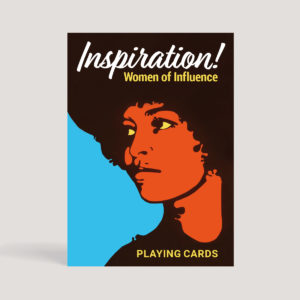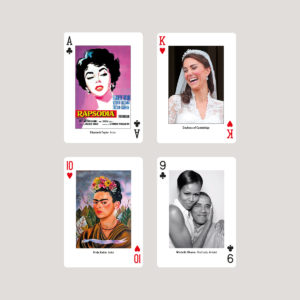‘The movement of the present day to place women in the same position as men is mad and utterly demoralising.’ Queen Victoria
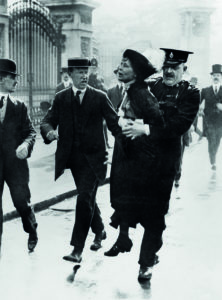 Victoria’s views about suffrage were common at the time. Which was why women in the UK (and US) only got the vote in 1919. The 1832 Great Reform Act went so far as to define voters: ‘male personsʼ. [Not until 1973 did all 50 US states allow women to serve on juries.] This discrimination provoked campaigners like Emmeline Pankhurst to direct action. Brave and inspirational women have, throughout history, overcome bigotry. Élisabeth Vigée Le Brun was born poor and rejected by art schools because of her gender – a woman couldn’t attend a life class (and be corrupted by nudity). But she forced her way (with Marie Antoinette’s patronage) into the Academy. When Laura Knight’s self portrait of 1913 showed her actually painting a naked man the Daily Telegraph called it horribly ‘vulgar’.The brave and openly bisexual Lempicka scandalised society; but by sleeping with the Swedish consul in St Petersburg in 1917 she saved her husband from the secret police.
Victoria’s views about suffrage were common at the time. Which was why women in the UK (and US) only got the vote in 1919. The 1832 Great Reform Act went so far as to define voters: ‘male personsʼ. [Not until 1973 did all 50 US states allow women to serve on juries.] This discrimination provoked campaigners like Emmeline Pankhurst to direct action. Brave and inspirational women have, throughout history, overcome bigotry. Élisabeth Vigée Le Brun was born poor and rejected by art schools because of her gender – a woman couldn’t attend a life class (and be corrupted by nudity). But she forced her way (with Marie Antoinette’s patronage) into the Academy. When Laura Knight’s self portrait of 1913 showed her actually painting a naked man the Daily Telegraph called it horribly ‘vulgar’.The brave and openly bisexual Lempicka scandalised society; but by sleeping with the Swedish consul in St Petersburg in 1917 she saved her husband from the secret police.
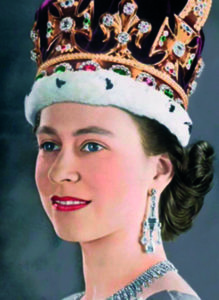
The women in this pack inspired through genuine achievement (although Elizabeth Taylor’s celebrity owed something to her marriages, and diamonds). If the Duchess of Cambridge owes her fame to marriage, her poise and dignity are hers alone. Consider the actors featured. Monroe inspired with wit and allure, Garland with talent and charm. Hepburn’s wartime suffering prompted her work for UNICEF (‘the best thing to hold onto in life is each other’). The great divas – Callas and Piaf – paraded genius and vulnerability, the tension of their performance palpable. Some shine through devotion to a cause or calling, like Eleanor Roosevelt; others had greatness thrust open them like Cleopatra, Elizabeth II and her forebear Elizabeth I. To overcome the physical, to overcome fear – and triumph – is what heroes like Joan of Arc, Rosa Parks, Odette Sansom and Edith Cavell did, in their different ways. Some were forgotten, until recently. Like the Creole Mary Seacole. Her ‘British Hotel’ in the Crimea provided remedies for soldiers’ every need; even the sniffy Florence Nightingale conceded ‘she was very kind and did some good’ although ‘she made many drunk’.
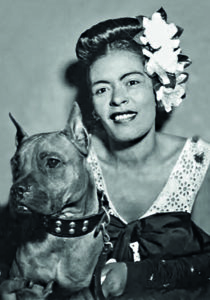 The greatest of women athletes have bravery of a different sort. Olga Korbut, who made gymnastics a popular sport, survived rape by her coach. In the amateur years, when sport was played for joy, Little Mo (Maureen Connolly), winner of nine majors before she was 19 (when crippled by a riding accident), stood out for sportsmanship and daring. She died young, like Wilma Rudolph, the great American track star who won three gold medals at the 1960 Olympics. Wilma was a sickly child, with a leg brace. Adversity (and determination) marks the people featured on these cards. Ellen Terry married the painter G.F. Watts when she was 16 and he was 46. After a few months, realising her error, she ran off with another bloke. Joan Baez’s early years were scarred by racial abuse; Monroe had a stutter as a child, was a ward of the state and was abused. Billie Holliday went to reform school at the age of 9. Princess Diana grew up in a stately home, but her parents’ bitter divorce created lasting insecurities. Aretha Franklin suffered similar trauma. Like Diana, Sissi, the Empress of Austria, hated the pomp of the court; but despite a life of tragedy (ending in her murder) she brought about the dual monarchy of Austria-Hungary. As a child, Marie Curie (twice winner of a Nobel Prize) lost her mother and sister to disease and suffered from depression. Charlotte Brontë had a childhood dominated by TB. Josephine Baker was the victim of poverty and violence. Some, like Baker – entertainer, Resistance agent, activist – were polymaths. Grace Kelly was an Oscar-winning actor and princess who transformed Monaco.
The greatest of women athletes have bravery of a different sort. Olga Korbut, who made gymnastics a popular sport, survived rape by her coach. In the amateur years, when sport was played for joy, Little Mo (Maureen Connolly), winner of nine majors before she was 19 (when crippled by a riding accident), stood out for sportsmanship and daring. She died young, like Wilma Rudolph, the great American track star who won three gold medals at the 1960 Olympics. Wilma was a sickly child, with a leg brace. Adversity (and determination) marks the people featured on these cards. Ellen Terry married the painter G.F. Watts when she was 16 and he was 46. After a few months, realising her error, she ran off with another bloke. Joan Baez’s early years were scarred by racial abuse; Monroe had a stutter as a child, was a ward of the state and was abused. Billie Holliday went to reform school at the age of 9. Princess Diana grew up in a stately home, but her parents’ bitter divorce created lasting insecurities. Aretha Franklin suffered similar trauma. Like Diana, Sissi, the Empress of Austria, hated the pomp of the court; but despite a life of tragedy (ending in her murder) she brought about the dual monarchy of Austria-Hungary. As a child, Marie Curie (twice winner of a Nobel Prize) lost her mother and sister to disease and suffered from depression. Charlotte Brontë had a childhood dominated by TB. Josephine Baker was the victim of poverty and violence. Some, like Baker – entertainer, Resistance agent, activist – were polymaths. Grace Kelly was an Oscar-winning actor and princess who transformed Monaco.
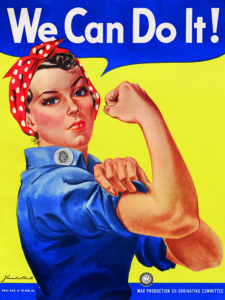 Fame, now ubiquitous, was febrile yesterday. The ‘Divine Sarah’ – Sarah Bernhardt – was perhaps the first global star of the stage, even after a leg was amputated. The sight of the reclusive Garbo, aviator Amelia Earhart, a pouting Bardot or twirling Shirley Temple stopped traffic. Jackie Kennedy had that aura, and Callas, and Michelle Obama has it. But fame is fragile. Sonja Henie, the greatest figure skater ever and a top Hollywood star, greeted Hitler at the 1936 Olympics with a Nazi salute. History proved this a mistake. Angela Davis’s attachment to hard-line communism, and her praise of ‘heroic’ East German border guards, did not endear her to liberals. But spare a thought for someone who never stopped traffic, yet became a true inspiration. Naomi Fern Parker, a machinist, was the unwitting model in the iconic 1943 poster ‘We Can Do It!’. And she didn’t earn a cent in image rights.
Fame, now ubiquitous, was febrile yesterday. The ‘Divine Sarah’ – Sarah Bernhardt – was perhaps the first global star of the stage, even after a leg was amputated. The sight of the reclusive Garbo, aviator Amelia Earhart, a pouting Bardot or twirling Shirley Temple stopped traffic. Jackie Kennedy had that aura, and Callas, and Michelle Obama has it. But fame is fragile. Sonja Henie, the greatest figure skater ever and a top Hollywood star, greeted Hitler at the 1936 Olympics with a Nazi salute. History proved this a mistake. Angela Davis’s attachment to hard-line communism, and her praise of ‘heroic’ East German border guards, did not endear her to liberals. But spare a thought for someone who never stopped traffic, yet became a true inspiration. Naomi Fern Parker, a machinist, was the unwitting model in the iconic 1943 poster ‘We Can Do It!’. And she didn’t earn a cent in image rights.
